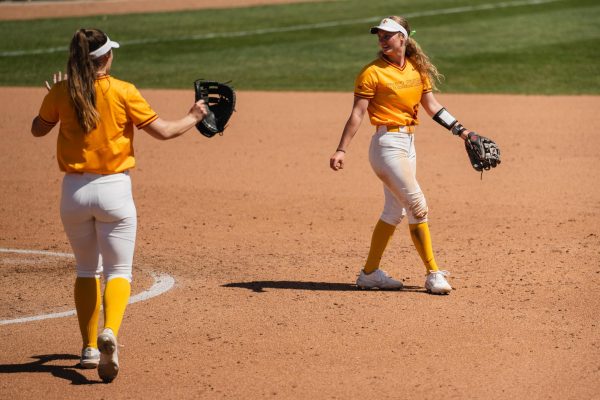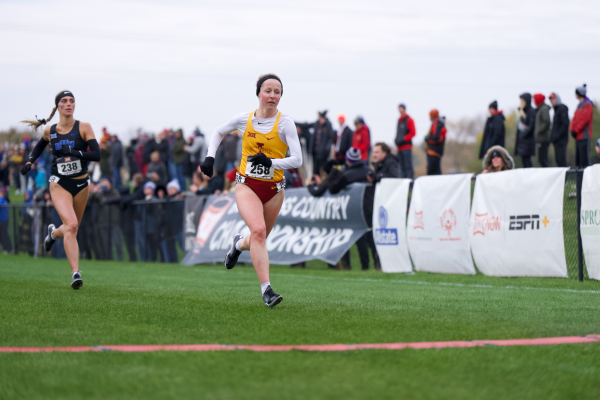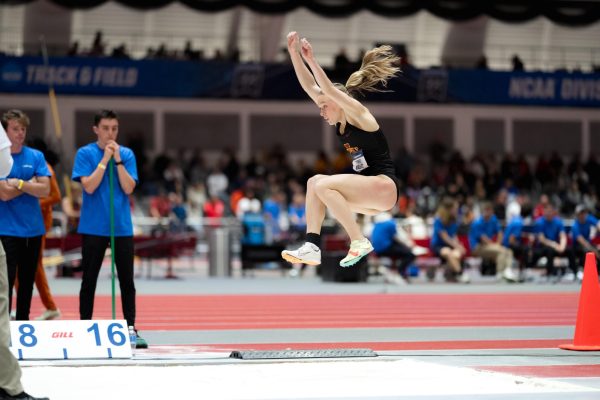ISU swimming and diving experiences transition in training
February 11, 2015
Shorter practices, fewer yards and a better feel in the water leave the ISU swimming and diving team relaxed and prepared.
The season is working itself toward completion and swimming programs across the country, including Iowa State, are switching up the practice style to a technique referred to as tapering. The major difference between regular season training and tapering is a reduction in yards required to swim during practices.
ISU coach Duane Sorenson explained how tapering works at the collegiate level.
“Most college programs go for a peak meet,” Sorenson said. “Usually it’s your conference championship where you want to have your fastest swims so mentally and physically you’re at a peak.”
The idea of peaking at the end of the year is important to qualify for the NCAA Championships. Less than 40 swimmers are invited in each event based off of the best times in those events. Iowa State uses the conference championship meet to create NCAA championship times.
Sorenson also specifically detailed his own approach to tapering.
“My philosophy has always been to train really hard throughout the year and then we cut our yardage down,” Sorenson said. “At this time of the year we do a lot less endurance swimming and we do more sprint work.”
Sorenson broke it down saying that the intensity is greater and that the coaches are asking the swimmers to swim much faster due to the reduction in yardage.
Swimmers grow up as tapered swimmers. This is the strategy that many ISU swimmers said they love because of the reduction in yardage to swim resulting in quicker practices. The idea of getting mentally prepared for a peak meet sets in as tapering reintroduces itself.
Kaylee Kucera and Alex Flatness are two ISU swimmers who enjoy the season of tapering because some definite advantages become present as tapered training is introduced leading into a peak meet.
“I think just overall you have more energy,” Flatness said. “Most of the time, you swim better at practice, but I think it’s just mentally getting you ready. I guess it’s just getting you ready for the race mindset.”
Flatness touched on the positives of the taper and Kucera discussed the difficulties of not having this form of training to rely on during the regular season.
“You’re not as rested for regular season meets and you’re doing way more yards,” Kucera said. “Sometimes we don’t have the junk yards that he just throws in there.”
The preparation in tapering philosophy used for the Cyclones’ peak meet will come to a close when the team travels to Austin, Texas for the four-day Big 12 Men’s and Women’s Championship. The event will take place Feb. 25 to 28 from 10 a.m. to 6 p.m.
“The volume of the yardage goes way down and they are doing more quality swimming,” Sorenson said. “They just don’t feel like slugs in the water. They start to feel like they’re a shark going through the water.
















